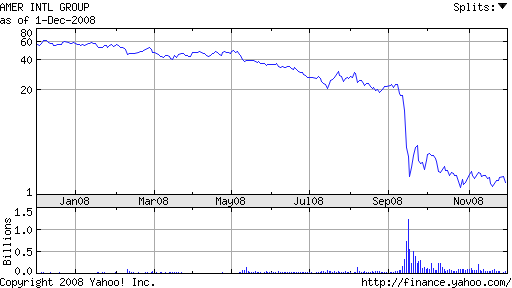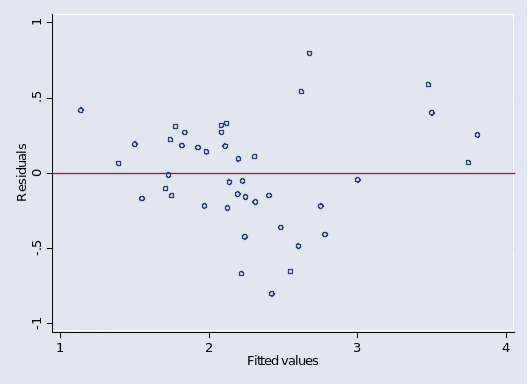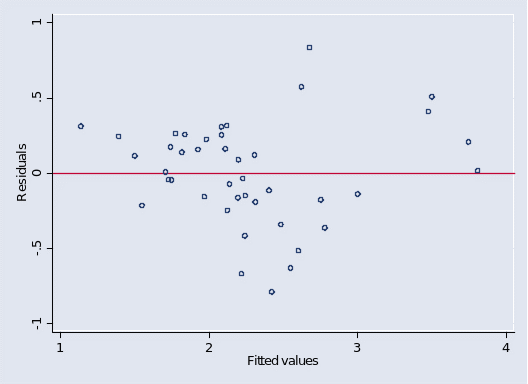The Financial Scam
On October 3rd, 2008, the US Senate passed the popular bill known as The Bailout Package. The bailout plan had followed after the worst financial scam in US history. The stock indices touched the low ground and big giants like AIG, Lehman Brothers, Merrill Lynch and Bank of America went to the verge of bankruptcy. Lehman Brothers filed for bankruptcy while AIG was rescued by an $85 billion bailout by the US government. Merrill Lynch and BOA were forced to a merger. On September 29, the house of senate rejected the Bailout package proposed by the US president. The three indices suffered severely the result and lost points hugely. With a few amendments, the bill was passed by congressional support after Bush signed the bill on October 3rd. investors were not helped as the DOW fell by 1000 points that day, marking the lowest in history.
AIG- Background
American International Group, Inc. provides insurance and financial services in the United States and other countries, through its subsidiaries. It has got index membership of S&P 500, S&P 100, and S&P 1500 Super Comp. The mortgage industry has been one of the most prosperous ones in the USA over the last few decades. The USA mortgage market now is hugely and well developed, offering a range of products on very flexible rates and terms. The famous sub-prime mortgage crisis began in 2006-07 as real state prices and especially house prices began to decline. Consequently, investors ran to sell the mortgage securities and investing in commodities markets.
In mid-2008, stock indices began to experience the downturn of the financial markets. On September 15th, all three big indices Dow Jones, S&P, and NASDAQ went most bearish since the 2001 attacks. The same day Lehman Brothers declared it filing for bankruptcy. The financial markets and investors panicked even more and indices went even more bearish. That day, AIG’s ability to stay put was cast under severe doubts and its stock suffered a 60% cut in price.
AIG-Bailout
In the worst aftermath of the financial crisis, almost 90% of debtors on house mortgages filed for returns of contracts as house prices had fallen greatly. AIG faced a severe liquidity crisis and short-term liabilities were huge. Meanwhile, AIG was rescued by the US government on September 17th through an $85 billion bailout in exchange for 80% equity of the firm. The rescue –bailout of AIG has been in a debate since then. Many economists and financial analysts believe that it was necessary to rescue a big mortgage giant for the stability of the economy, while many others have criticized such a move as based on partiality and resulting in more taxes on the general public.
AIG was saved from bankruptcy but its stock price continued to tumble along with the market indices. The bailout package had little effect on its stock price as it continued its low run of around $2 that had begun in mid-September.

Hypothesis-Factors Affecting the AIG’s stock
According to CAPM, the expected return on any stock is directly proportional to the market return. Although the actual return is very different from expected or required return, to test the hypothesis that actual return is also affected by the market return, we include in our model the market index of S&P500 where AIG is traded. Many econometric models have used a weighted average of all big indices in the market.
CAPM also makes use of the firm’s beta. AIG’s beta is calculated at 2.53 and for our period of study, it will be treated as constant. Apart from that, interest rates affect the short-term returns on bonds that in turn affect stock prices. As short-term gains on bonds rise, bonds are more and stocks are less attractive. This is a conventional hypothesis and will again be tested in our model.
The largest qualitative factor that influences stocks is the news. In our model, our purpose is to consider the effect of the bailout package on the stock. A bailout package is a one-time event that was announced on October 3rd. To capture the effect of this, we need to consider the period following the bailout and also the qualitative effect of the event at the time of accruing. Stock prices in uncertain times such as the present financial crisis are greatly affected by favorable or unfavorable news.
The basic econometric Model
The initial proposed econometric model to be estimated is as follows:
Aig = b0 + β1S&P + β 2Tr + β 3 News + µ
Where:
- Aig: AIG stock price at given date
- S&P: Market index of S&P 500
- Tr: Returns on 6 months T Bills.
- News: A dummy variable (taking values 1 or 0)
- “µ” is the abnormal returns on the stock not explained by these variables.
Data Collection and methodology
Data on the above variables are collected between 1st October and 28th November 2008. The period was marked by the uncertainty of the Bailout plan. To measure the effect of this news exposure on AIG’s stock, specific dates have been marked on which news may have affected AIG’s investors. Stock prices adjusted for dividends and splits have been obtained along with the S&P index. The data for returns on 6 months T-Bills has been collected from Federal Reserve.
We want to build a model that will define the market information exposure of the stock; that is, how fast were the investors responding to the news of bailout. The event window is the time period that we are considering for the stock price changes. In this case, the event window is from October 1st to November 28th, 2008. The specific events are as follows:
- September 29th: US senate rejected bailout plan.
- October 1st: US President signed the bill.
- October 3rd: Senate passed the Bailout package.
- October 12th: IMF and G-7 assured of no more Lehmans.
- October 17th: News of the proposed merger between GM and Chrysler
- November 10th: Circuit city files for bankruptcy.
Apart from specific events, the previous day’s change in the index is also considered. Where a major change is seen on the previous day, the value of News is 1 if unfavorable and vice versa.
Regression Results : Estimated Model (Using STATA)
The model with estimated parameters is as follows:
Aig = – 4.6 + 0.00768 SP – 0.295 intrst + 0.0974 news + µ
(.668) (.0008) (.226) (.1453)
Interpretation
The intercept term tells the minimum return that AIG stock could have in case SP=intrst=news=0 is -4.6. This makes a little sense as the price cannot be negative. However, the coefficient of SP is of interest. It predicts that under fixed interest rate and news, a one-point increase in the S&P index results in a.00768 unit increase in the AIG’s stock price. This also confirms the positive beta of 2.53 for AIG.
The coefficient of interest is negative as it should be. It states that at a fixed SP (and news), a one percentage point rise in returns on T Bills is likely to cause the stock price to be 0.295 units less. This makes sense as we have discussed above that the rise in interest rates causes the returns on the bonds to be less. This makes bonds less and stocks more attractive. The increase in daily returns on T Bills is predicted to cause a decrease in the stock price in our model.
The coefficient of “news” simply states that citrus paribus (keeping others fixed), a positive news during the period is likely to cause a 0.0974 units more return on the stock. The positive parameter makes sense as it follows the general hypothesis that a positive news builds the investors confidence.
Hypothesis Tests
This is very important to test the significance of the coefficient parameters in the model. Out Null hypothesis are as follows:
H0 : β i = 0 against two tailed test H 1 : β i ≠ 0 (for estimator i=1 to 3)
SP: The ‘t’ statistic for the “SP” is 9.29. That is statistically very significant under critical value of 1.96 under 5% significance level. Hence we fail to accept the Null Hypothesis that β 1 = 0.
Intrst: The ‘t’ statistic for intrst is -1.30, that is under the rejection region. Hence we fail to reject the Null H0 : β 2 = 0. Although the sign of intrst confirms our hypothesis, the ‘t’ statistic is not significant partially due to the less observations and partially due to the missing variable bias.
News: ‘t’ statistic = 0.67. In this case the coefficient is statistically insignificant under 5% significance level, so we say that we cannot reject Null. But again we must accept that the number of observations and omitted variable might have caused this to fall in rejection region.
Goodness of Fit
In the current model, we must check the goodness of fit with these variables. The R squared reported is 0.7445, or 74.45 %. Normally, in true models such R squared is considered a good fit. But to analyze our current model, we certainly need to confess there are variables and macroeconomic factors that define and explain the movement in stocks. The stock movement is still an area of intense study and most of the technical analysis has failed under current financial crisis. Going back to fundamental analysis might be helpful. For that we need to include a qualitative factor that defines the firm’s capital condition then it wouldn’t be very helpful in this case as AIG’s sustainability has been cast under doubts since sharp cuts in stock price in mid September, hence this factor can be assumed to be constant in the period under study.
F Tests for joint significance
- F Test is used to test overall significance of the model. Testing the significance of all three variables under Null: sp=intrst= news=0
Alternative: All three are not jointly equal to zero.
Results: F( 3, 38) = 36.91
The critical value for df: 3/38 is 2.87; hence we cannot accept the Null.
- Now testing for sp = intrst = 0
F( 2, 38) = 54.46. This is again significant.
- For sp = news=0 F (2, 38) = 46.89. Statistically significant.
Residuals
The sum of residuals in the above estimation is reported as:

Although the residuals seam evenly distributed about zero, but the mean value of residuals reported by Stata is not exactly zero (it is very close to zero). The basic assumption of OLS is that sum of residuals is zero. In our model, this is not exactly captured due to the reasons discussed above; missing variables and small sample.
A refined Model
To solve the problem of residuals, we may want to add another variable. This is often found that including an interaction term in the model helps better explain the model. An interaction variable is a product of a dummy variable and other explanatory variable. In this case we can include a new variable expo= news* sp, and another variable expo1= news* intrst. Now we can investigate the comparative effect of positive and negative news in case of changes in T Bill-returns and market index
Running regression of Aig on sp, intrst, news and expo and expo1 gives:
The R squared has not improved significantly; it is 76% against 74.5% previously.
‘t’ statistics are still significant in cases of intrst, news and expo. However joint significance still exists ( F = 22.74). But an important change is in case of negative sign of “News”. As a general hypothesis discussed above, positive news should be responded positively. But in our data set, we see that market indices went further down after news of Bailout package. This is an important finding for our purposes, as we are trying to investigate the effect one time event on the stock.
The residuals are reported: There is slight improvement, as mean of residuals is less.

Conclusion
Our estimated model has been able to show maximum of 76% R squared. We know from financial theory that it has not been easy to predict the stock prices. There have been macroeconomic and industry specific variables that randomly define the movements in stocks. As for the question of effect of bailout effect on stocks, the effect is negative. They markets went down on the day bailout passage was announced. This is contrary to what general perception is, but this is what was experienced over the last 2 months and the proposed econometric model captured that.
One should not forget that the capital sustainability doubts and general investor panic that were cast over AIG have been prominent in keeping its stock low, despite bailout.
Sources
(The regression results are reported from STATA 8.0 version. STATA works under OLS assumptions and is well reputed statistical software).
- Wooldridge, Jeffery M. Introductory Econometrics: A Modern Approach.
- Zhaohui Zhang, B.A., M.s the Impact of IMF Bailout on U.S. Bank Creditors’ Equity Values: An Event Study of South Korea’s Case University of Texas. 2000.